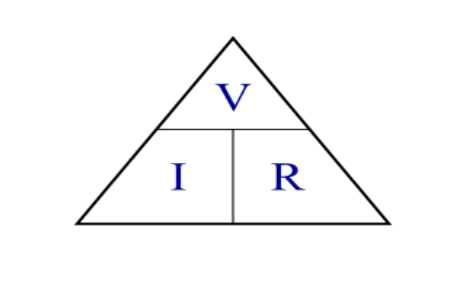Born: 16th March 1789 Erlangen/Germany
Died: 6th July 1854 Munich/Germany
Georg Simon Ohm was born into a Protestant family in Erlangen, Brandenburg-Bayreuth, son to Johann Wolfgang Ohm, a locksmith and Maria Elizabeth Beck, the daughter of a tailor in Erlangen. Although his parents had not been formally educated, Ohm's father was a respected man who had educated himself to a high level and was able to give his sons an excellent education through his own teachings. Of the seven children in the family, only three survived to adulthood: Georg Simon, his younger brother Martin, who later became a well-known mathematician, and his sister Elizabeth Barbara. His mother died when he was ten.
From early childhood, Georg was taught by his father who brought him to a high standard in mathematics, physics, chemistry and philosophy. Georg attended Erlangen Gymnasium from age eleven to fifteen where he received little in the area of scientific training, which sharply contrasted with the inspired instruction that Georg received from his father.
Georg Ohm's father, concerned that his son was wasting his educational opportunity, sent Ohm to Switzerland. There in September 1806 Ohm accepted a position as a mathematics teacher in a school in Gottstadt bei Nidau. Karl Christian von Langsdorf left the University of Erlangen in early 1809 to take up a post at the University of Heidelberg. Ohm wanted to restart his mathematical studies with Langsdorf in Heidelberg. Langsdorf, however, advised Ohm to pursue mathematical studies on his own and suggested that Ohm read works of Euler, Laplace and Lacroix. Rather reluctantly Ohm took his advice but he left his teaching post in Gottstatt Monastery in March 1809 to become a private tutor in Neuchâtel. For two years he carried out his duties as a tutor while he followed Langsdorf's advice and continued his private study of mathematics. Then in April 1811, he returned to the University of Erlangen.
Ohm's own studies prepared him for his doctorate which he received from the University of Erlangen on October 25, 1811. He immediately joined the faculty there as a lecturer in mathematics but left after three semesters because of unpromising prospects. He could not survive on his salary as a lecturer. The Bavarian government offered him a post as a teacher of mathematics and physics at a poor quality school in Bamberg which Ohm accepted in January 1813. Unhappy with his job, Georg began writing an elementary textbook on geometry as a way to prove his abilities. That school was closed in February 1816. The Bavarian government then sent Ohm to an overcrowded school in Bamberg to help out with the teaching of mathematics.
Ohm sent his completed manuscript to King Wilhelm III of Prussia. The King was satisfied with Ohm's book and offered Ohm a position at the Jesuit Gymnasium of Cologne on 11 September 1817. This school had a reputation for good science education and Ohm was required to teach physics in addition to mathematics. The physics laboratory was well equipped, allowing Ohm to begin experiments in physics. As the son of a locksmith, Ohm had some practical experience with mechanical devices.
Ohm published "Die galvanische Kette, mathematisch bearbeitet" (>The Galvanic Circuit Investigated Mathematically) in 1827. Ohm's college did not appreciate his work and Ohm resigned from his position. He then made an application to and was employed by, the Polytechnic School of Nuremberg. Ohm arrived at the Polytechnic School of Nuremberg in 1833, and in 1852 he became a professor of experimental physics at the University of Munich.
In 1849, Ohm published Beiträge zur Molecular-Physik, (in English: Molecular Physics). In the preface of this work he stated he hoped to write a second and third volume "and if God gives me length of days for it, a fourth". However, on finding that an original discovery recorded in it was being anticipated by a Swedish scientist he did not publish it, stating: "The episode has given a fresh and deep sense for my mind to the saying 'Man proposes, and God disposes'. The project that gave the first impetus to my inquiry has been dissipated into mist, and a new one, undesigned by me, has been accomplished in its place." Ohm died in Munich in 1854, and is buried in the Alter Südfriedhof. A collection of his family letters would be compiled in a German book, which shows that he used to sign some of his letters with the expression "Gott befohlen, G S Ohm," meaning "Commended to God".
Ohm’s Law Triangle


